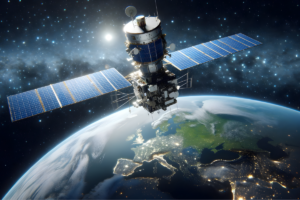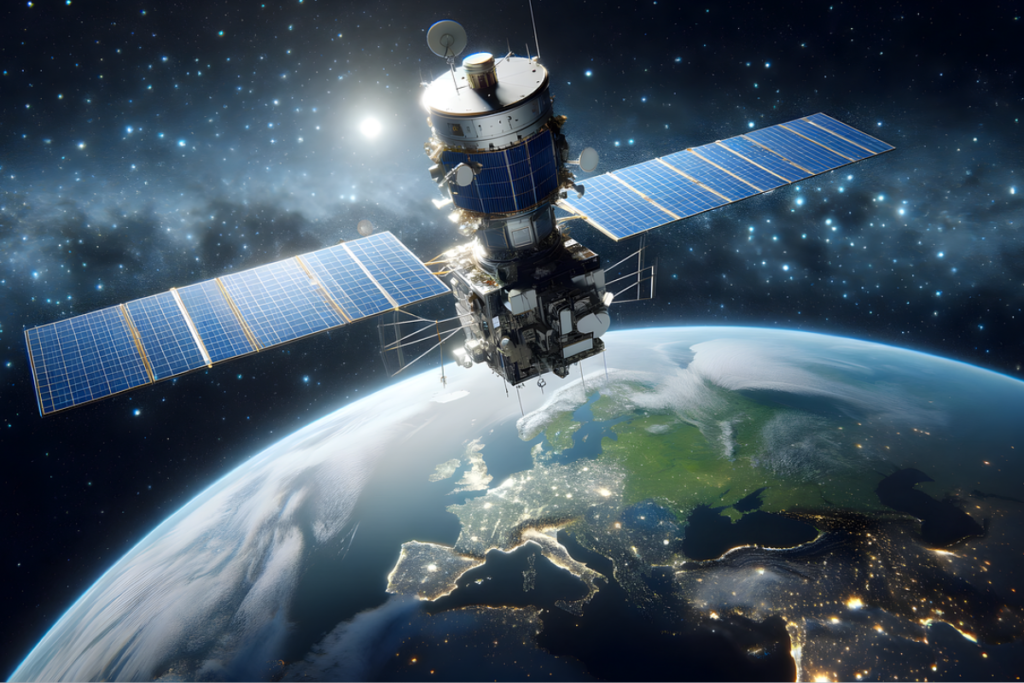Introduction
The Fleet Space Centauri-6 satellite stands as a beacon of innovation and progress In the ever-expanding realm of space exploration and satellite technology, t. Designed and launched by Fleet Space Technologies, Centauri-6 is set to revolutionize how we understand and utilize satellite communication. But what makes this satellite so special? Let’s dive into the mission, technology, and future prospects of Centauri-6.
Fleet Space Technologies: A Brief Introduction
Background of Fleet Space
Fleet Space Technologies, an Australian company, has been a trailblazer in the field of satellite communications since its inception. The company focuses on creating low-power, high-performance satellite systems that provide global connectivity for various industries. Their innovative approach has led to the successful development and deployment of several satellite missions, with Centauri-6 being the latest in their impressive portfolio.
Vision and Mission of Fleet Space
Fleet Space’s vision is to enable ubiquitous connectivity for the entire planet, making information accessible from even the most remote locations. Their mission is to bridge the gap between the digital and physical worlds, enhancing industries such as mining, logistics, and agriculture through advanced satellite technology.
The Centauri Satellite Series
Evolution of the Centauri Series
The Centauri satellite series is a cornerstone of Fleet Space’s mission to create a global satellite network. From the launch of the first Centauri satellite, each subsequent mission has introduced new technologies and capabilities. Centauri-6 is the latest iteration, building on the successes and lessons of its predecessors.
Technological Innovations in the Centauri Satellites
Each satellite in the Centauri series has pushed the boundaries of what is possible in space technology. From compact, efficient designs to the integration of AI-driven systems, the Centauri series has set new standards in the industry. Centauri-6, in particular, showcases cutting-edge advancements that promise to enhance global connectivity and industrial IoT applications.
The Centauri-6 Satellite: An Overview
What is Centauri-6?
Centauri-6 is a state-of-the-art satellite developed by Fleet Space Technologies as part of their Centauri series. It is designed to provide robust, low-power satellite communication solutions, particularly in areas that are beyond the reach of traditional networks. Centauri-6 is equipped with the latest technologies, making it a vital component of Fleet Space’s global network.
Key Features of Centauri-6
Centauri-6 boasts several key features that distinguish it from previous satellites. It includes advanced communication systems that offer higher data rates and greater reliability. The satellite is also equipped with AI and machine learning capabilities, enabling it to optimize its performance and adapt to changing conditions in space.
The Mission Objectives of Centauri-6
Enhancing Global Connectivity
One of the primary objectives of Centauri-6 is to enhance global connectivity. By providing reliable communication channels in remote areas, Centauri-6 helps bridge the digital divide, ensuring that even the most isolated regions can access vital information and services.
Supporting Industrial IoT
Centauri-6 plays a crucial role in supporting the Industrial Internet of Things (IoT). Its low-power communication systems are ideal for connecting a vast array of industrial devices, enabling real-time data collection and analysis. This capability is particularly beneficial for industries such as mining, where connectivity can be challenging.
Technological Advancements in Centauri-6
Cutting-Edge Communication Systems
Centauri-6 features the latest in communication technology, with systems designed to offer high data rates while consuming minimal power. This makes it highly efficient, allowing it to support a wide range of applications without requiring significant energy resources.
Advanced Propulsion Technologies
The propulsion system of Centauri-6 is another area where the satellite excels. It utilizes advanced propulsion technologies that allow for precise maneuvering in space. This capability is essential for maintaining the satellite’s position and ensuring optimal performance over its operational lifespan.
Onboard AI and Machine Learning Capabilities
Centauri-6 is equipped with onboard AI and machine learning systems, which enable it to make real-time decisions and optimize its operations. This technology allows the satellite to adapt to changing conditions, such as varying levels of space debris or shifts in its orbital path, ensuring consistent performance.
The Launch of Centauri-6
Launch Vehicle and Partner
The launch of Centauri-6 was a significant milestone for Fleet Space. The satellite was launched aboard a reliable launch vehicle, in partnership with a leading space agency. This collaboration ensured the safe and successful deployment of Centauri-6 into its designated orbit.
Timeline of the Launch
Centauri-6 was launched on [Insert Specific Launch Date], marking the beginning of its mission to enhance global connectivity. The timeline leading up to the launch involved rigorous testing and validation processes, ensuring that the satellite was fully prepared for its journey into space.
Role of Centauri-6 in Global Satellite Networks
Integration with Existing Satellite Networks
Centauri-6 is designed to seamlessly integrate with existing satellite networks, enhancing their overall performance. By providing additional coverage and redundancy, Centauri-6 ensures that communication channels remain reliable even in the most challenging conditions.
Impact on Data Transmission Speed and Reliability
The addition of Centauri-6 to the global satellite network significantly improves data transmission speed and reliability. Its advanced systems reduce latency and increase bandwidth, making it possible to transmit large amounts of data quickly and efficiently.

Future Prospects for Centauri-6
Potential Upgrades and Enhancements
Looking ahead, there are several potential upgrades and enhancements planned for Centauri-6. These could include further improvements to its communication systems, as well as the integration of new technologies that are currently in development.
Centauri-6’s Role in Future Space Missions
Centauri-6 is expected to play a vital role in future space missions, particularly those focused on expanding global connectivity. Its advanced capabilities make it an ideal candidate for supporting long-term missions that require reliable communication infrastructure.
#MissionSpaceMotionSickness #AddObjectOnImageWithAi #SpaceMissionEngineering
Conclusion
The Fleet Space Centauri-6 satellite represents a significant leap forward in satellite technology. With its advanced features and mission-focused design, Centauri-6 is set to revolutionize global connectivity and support a wide range of industrial applications. As we look to the future, Centauri-6 will undoubtedly play a crucial role in shaping the next generation of satellite networks.
FAQs
1. What makes Centauri-6 different from other satellites?
Centauri-6 stands out due to its advanced communication systems, AI-driven operations, and low-power design, making it ideal for enhancing global connectivity and supporting Industrial IoT.
2. How does Centauri-6 improve global connectivity?
Centauri-6 provides reliable communication channels in remote areas, helping to bridge the digital divide and ensure access to vital information and services worldwide.
3. What are the industrial applications of Centauri-6?
Centauri-6 is particularly beneficial for industries like mining and agriculture, where it enables real-time data collection and analysis, even in challenging environments.
4. When was Centauri-6 launched?
Centauri-6 was launched on [Insert Specific Launch Date], marking the start of its mission to enhance global satellite networks.
5. What are the future plans for Fleet Space Technologies?
Fleet Space Technologies plans to continue expanding its satellite network, with potential upgrades to Centauri-6 and the development of new technologies to further enhance global connectivity.


